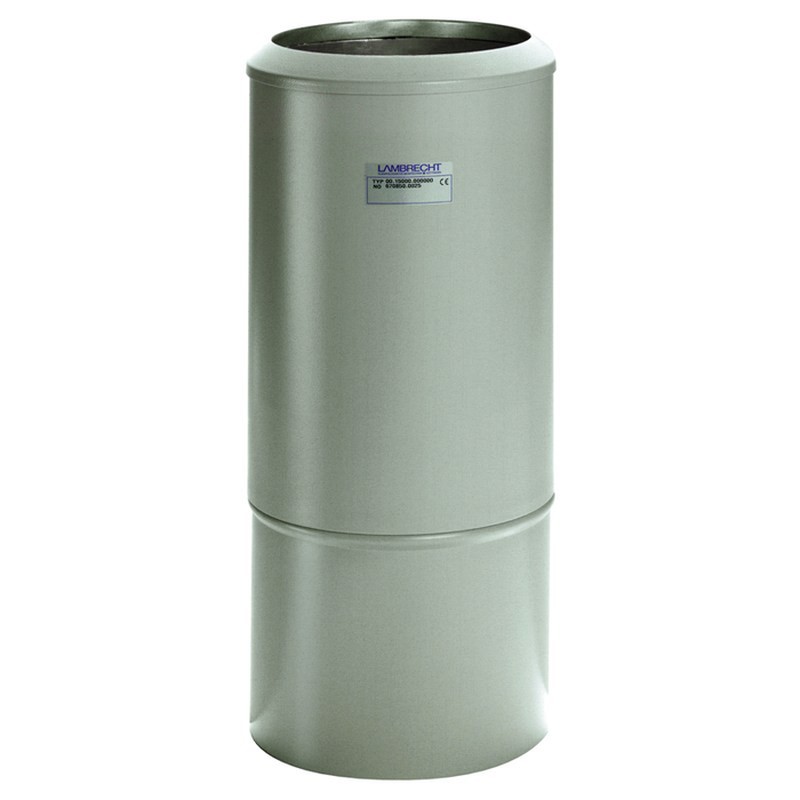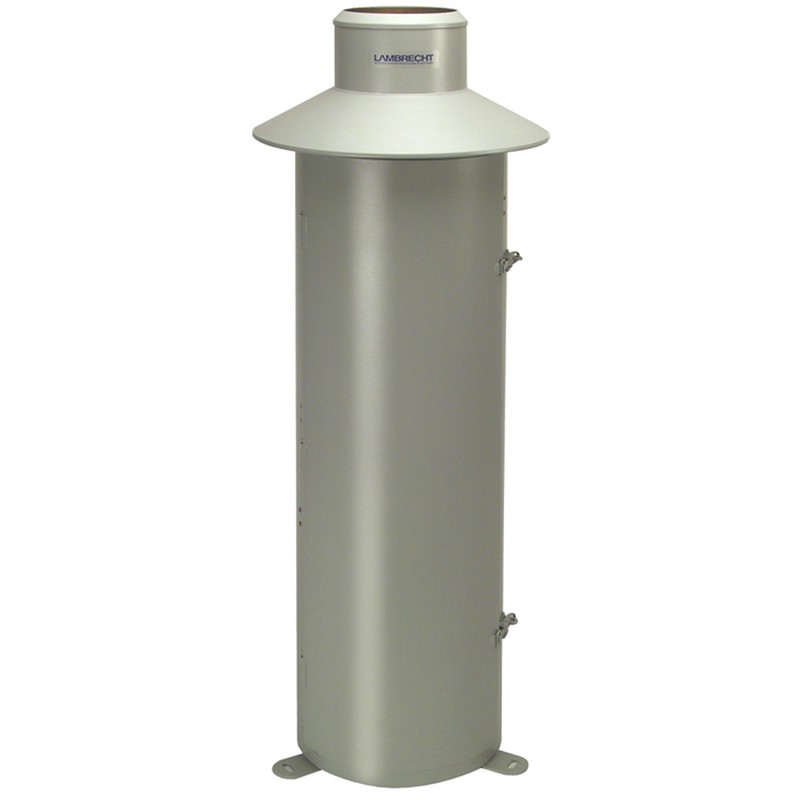All about rain gauges
What does this instrumental consist of? What does it measure? What models exist? How should we install them?
A rain gauge is a meteorological instrument which gives us a metric measure of the rain or precipitation that falls at a certain point and in a specific time space. With it we are going to measure the rain or fallen snow, and we are going to do this measurement in mm or l / m2 .
The rain gauge is a simple instrument to build, especially its totalizing version, and that is why it is one of the oldest meteorological instruments and thanks to which it allows us to have longer rainfall series , which begin in Europe between the XV and XVI centuries.
Its construction is based on a cylinder or cone, made of plastic or metal, with a specific opening surface, an internal tank and a measurement scale in mm or l / m2, printed on the side of the instruments or on an external test piece that we will use to make the measurements. This measurement scale present in the rain gauge or in the specimen always goes in relation to the opening or collection surface.
There are several models of rain gauges depending on their design and functionality . The first difference we have to make between analog rain gauges and digital rain gauges. Secondly, we are going to differentiate between the totalizing models and the models that are going to measure precipitation intensity .
Analog rain gauges or totalizers are those of simpler construction, either in the form of a cone or cylinder , which directly collect the precipitation and store it inside. They differ in their collection capacity and also in their design and manufacturing material.
The simplest rain gauges are made of plastic , with a conical shape, and have capacities between 40 and 70mm . They are usually placed nailed to the ground, to a stake, or to a pot. They are for domestic use.
High-capacity totalizer models owe their design to Prof Hellmann . . They are made of metal, either stainless steel, aluminum or zinc. They are cylindrical in shape and consist of an upper collecting part, a funnel and a lower part or tank. They have capacities between 100 and 220mm , they are normally placed on a mast at a height of 1.5m and in a place as clear as possible. It is an instrument of official use for meteorological observatories .
In these rain gauges the precipitation measurement is made with an external test tube , which is administered with the rain gauge. This specimen allows us to have a rain resolution between 0.1 and 1mm, in a measurement capacity between 10 and 25mm depending on the model. Thus if we record a precipitation greater than 10mm we will have to make the measurement several times, transferring the water from the rain gauge tank to the test tube.
Digital rain gauges allow us to measure total precipitation and at the same time also the intensity of precipitation . Then. these data are displayed on a screen or exported to an external device, such as a PC. They can be rain gauges associated with automatic weather stations or instruments installed individually and connected electrically or wirelessly to a central station.
These rain gauges are based on an internal rocker arm system. Rain enters the rain gauge through its opening or collection area, in the same way as conventional rainwater, the collected rain passes through a funnel and reaches the rocker system. It falls on the rockers until the dump occurs, each dump is equivalent to a precipitation record, normally 0.2mm. The dump is transmitted electrically as a signal and is registered in the central storage system. The frequency of dumps is what will give us the intensity of precipitation, expressed in mm / h. The rain gauge is emptied automatically and continues at the bottom. In this case, the rain does not accumulate, it is only recorded.
A basic recommendation for this type of rain gauge is a perfectly level or flat installation. If the rain gauge is installed at an angle, the rocker arm system will malfunction. Another key point is to prevent air from shaking the rain gauge, to avoid this we will install tension cables in all automatic stations installed on masts over 2m high.
For the measurement of the intensity of precipitation, we continue using a meteorological instrument that we can consider as a jewel. It is the rain gauge , which follows the design of Dr Ramón Jardí . At first glance it may seem like a traditional rain gauge, but inside there is a mechanism that translates the collected precipitation and the rate at which it falls, into a mechanical system that ends with a graphical representation on graph paper of said intensity. It is an instrument located in official meteorological observatories.
A special case of precipitation is snow , snow measurement is complicated, but there are efficient solutions to transform snow to liquid and be able to measure it. In analog rain gauges the most efficient solution is to pour a known and exact quantity or volume of hot water into the rain gauge, to melt the snow inside it and thus be able to make the measurement in liquid format. Then we will have to subtract from the total, the volume of hot water added as an extra.
In digital rain gauges , the solution is easier, since a wide variety of models and brands incorporate heating in the rain gauge system, so the snow melts at the same time it falls and turns into water, which then falls to the rockers ..
Finally, we must warn about the need for maintenance of the rain gauges. An essential care to avoid deterioration and check its proper functioning. For example, in digital rain gauges it is usually common to decalibrate after a few years or with excessively high rainfall intensities, so it will always be useful to have an analog rain gauge as a companion, to verify the collected data.
Other external agents, such as wind , also influence the amount of precipitation collected, both in analog and digital models.



Opinions of our clients
Receive our news
We're almost done!
We have sent you an email to confirm your email